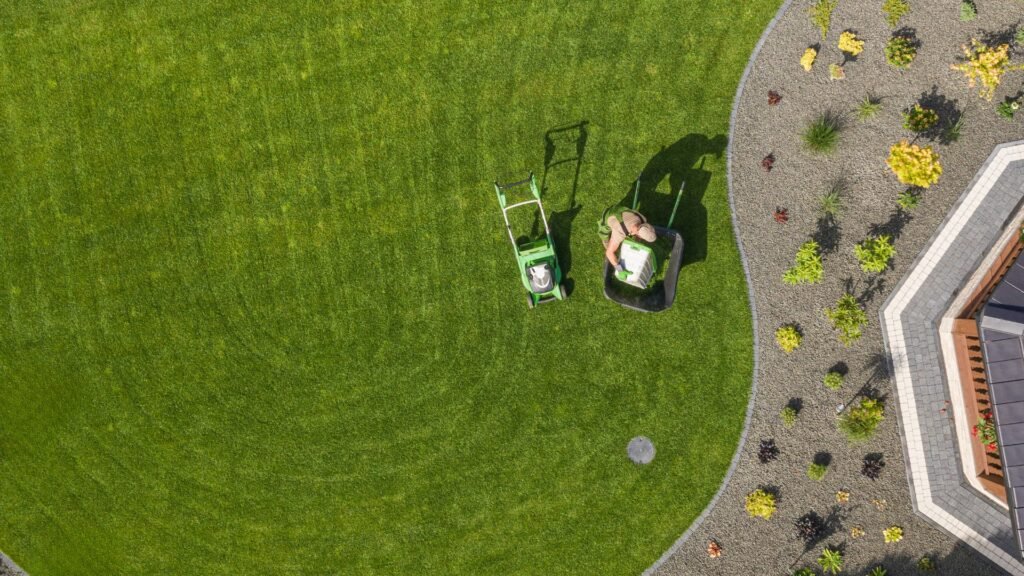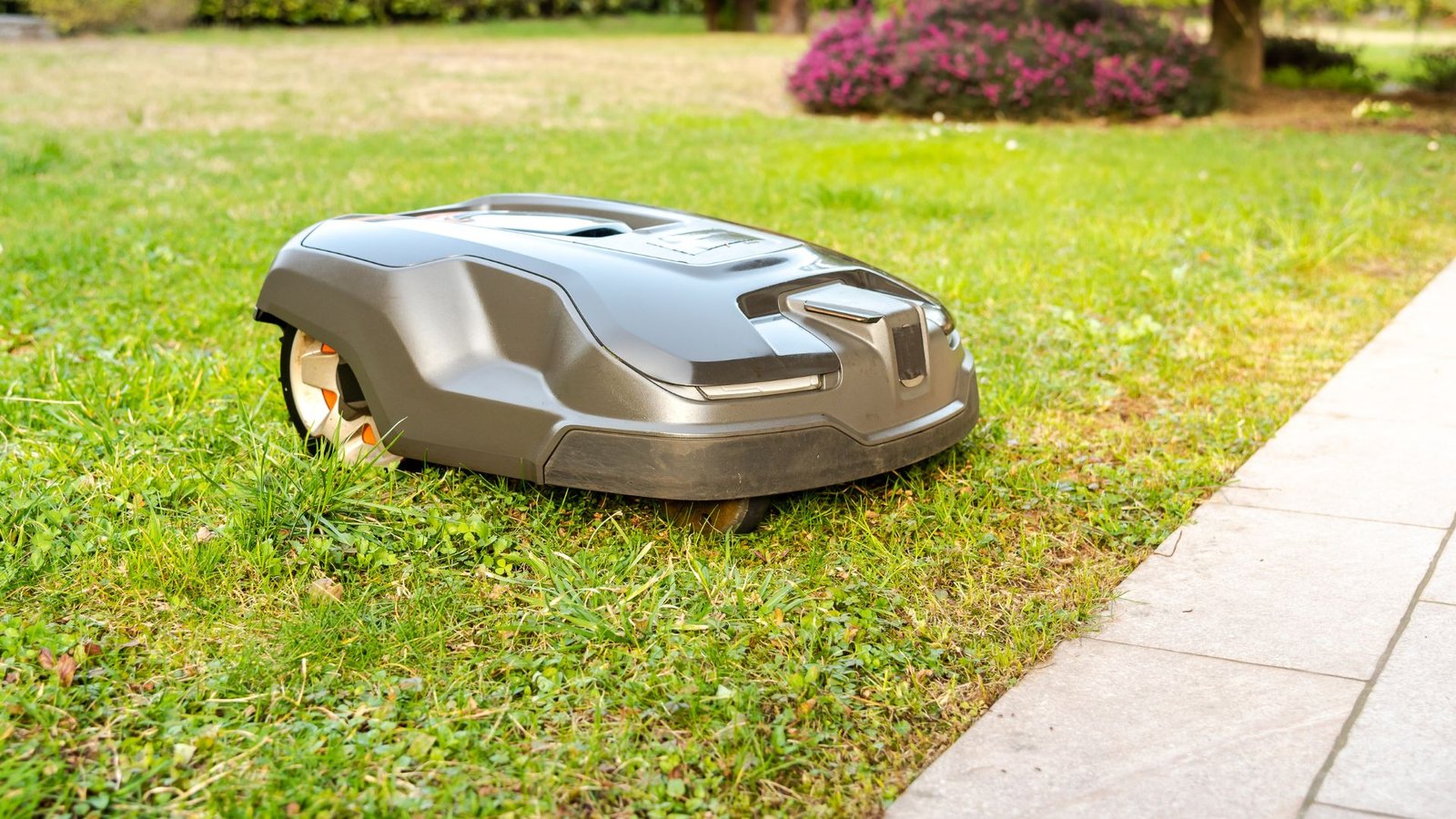Hybrid lawn maintenance combines robotic mowers’ efficiency with manual care’s precision to create a perfectly manicured yard. Your investment of $1,000 to $4,000 in an autonomous mower needs just 10 minutes of weekly care to stay protected. Most homeowners don’t know that poor upkeep can get pricey with issues like decreased traction, uneven cutting, and navigation errors.
A well-planned lawn maintenance schedule helps keep your robot helper and traditional tools working at their best. The right timing for each approach, based on your grass care schedule, streamlines processes and reduces work. Your dual approach to lawn care works much simpler than maintaining a hybrid car. This becomes clear when you have different hybrid grass types that need both automated and manual cutting methods.
This piece shows you our tested system to maintain your robotic lawn mower for the best performance, life span, and a beautiful lawn. You’ll find ways to keep your autonomous helper running smoothly among your manual maintenance tasks – from cleaning and blade sharpening to battery care and seasonal prep. This balanced approach gives you automation’s convenience and the perfect finish that only a human touch can add.
Understanding the Hybrid Lawn Care Approach

What is hybrid lawn maintenance?
Hybrid lawn maintenance blends automated technology with traditional hands-on care. This approach combines robotic mowers with manual techniques to create a complete lawn care system. Just like hybrid fertilizer programs mix organic and synthetic nutrients, hybrid lawn care takes the best elements from both methods.
Your robot mower handles daily cutting while you take care of specialized tasks. Professional landscaping companies now realize that neither fully automated nor manual solutions work well on their own.
Benefits of combining robot and manual care
A hybrid lawn maintenance approach offers many advantages. Robot mowers reduce the maintenance work by a lot through automation. This combination helps the environment since robot mowers work well with organic treatment methods and cut down chemical usage by up to 75%.
The hybrid approach gives you:
- Better durability in busy areas
- Regular cuts from robots, plus precise edging from manual work
- Better soil health through balanced care methods
- Affordable maintenance over time
When hybrid care makes the most sense
Hybrid lawn maintenance works best in certain situations. Properties with different terrain types let robots handle open areas while manual care tackles complex sections. This setup works great for lawns with high-traffic spots that usually get bare patches.
This method also helps as a stepping stone. Yes, it is common for professionals to start with traditional methods. They establish healthy grass first and then add more automated and organic elements. This careful change stops the “shock” that happens when switching care systems too fast.
The hybrid maintenance plan adapts well to seasonal changes and moves with your lawn’s needs throughout the year.
Weekly and Monthly Maintenance Tasks
Regular lawn equipment maintenance is the lifeblood of successful hybrid lawn maintenance. Consistent care will help you avoid pricey repairs and give your robot helper and manual tools peak performance throughout the season.
Cleaning and inspecting your robot mower
Your robotic mower needs regular cleaning to prevent performance issues and extend its lifespan. I power down the mower completely after 1-2 weeks of operation and flip it on a soft surface. A soft brush works best to remove grass clippings from the blades, wheels, and undercarriage. Stubborn buildup comes off easily with a damp cloth – but never use a pressure washer, as it can damage electronic components. Wheel inspection becomes vital to check for mud or debris that could affect traction, especially when you have AWD models on slopes.
Manual edging and trimming tips
Manual edging tools give you crisp lawn edges where robots can’t reach. A half-moon edger creates a clean boundary about half an inch wide and one inch deep. This small trench stops grass from spreading onto walkways. Long-handled edging shears help achieve precise trimming. Your manual edging tools need cleaning after each use to prevent rust formation.
Blade checks and replacements
Sharp blades are vital for both robot and manual mowers. Grass tears instead of getting clean cuts with dull blades, which leads to brown patches and disease. Weekly blade sharpness checks on robot mowers are essential, and blades need replacement every 1-2 months with heavy use. Robot mower blades need replacement rather than sharpening. Manual mower blades require sharpening once per season at least, with immediate replacement if you spot nicks or excessive wear.
Battery and charging station care
Battery care substantially affects your robot mower’s performance. The charging contacts on both the mower and the station need monthly cleaning with a dry cloth or contact cleaner. Winter storage works best with batteries at 50-70% charge rather than full or empty to preserve battery health during dormancy. The charging station’s power cable and connections need regular inspection for wear or damage.
Manual mower tune-ups
Each mowing season starts with a complete manual mower tune-up. Dark or sludgy oil needs changing, along with replacing or cleaning the air filter and checking the spark plug for wear. Proper tire pressure ensures even cutting, while a plastic putty knife removes caked-on grass from the undercarriage. Here’s a clever tip: cooking spray on the deck’s underside prevents buildup.
Seasonal Lawn Maintenance Schedule
Your hybrid lawn care routine should adapt as seasons change. A good seasonal plan will give a smooth workflow between your robotic helper and manual tools all year round.
Spring: Setup and soil prep
Your lawn wakes up from winter dormancy in early spring. Start by testing your soil to check nutrient needs and pH levels. Clean up your lawn by clearing debris and rake out dead grass. Cool-season grasses need fertilizer when they start growing actively. Warm-season grasses do better with feeding in mid-to-late spring. Keep your mowing height on the higher side during this season to help roots grow deeper.
Summer: Heat stress and mowing frequency
Summer heat calls for smart lawn management. Your grass needs protection from heat stress, so keep it taller—longer grass develops deeper roots that find water better in the soil. Deep but spaced-out watering works best. You’ll want about one inch per week, and the best time is between 6-10 a.m. to cut down on water loss. You’ll need to mow warm-season grasses weekly, while cool-season types might need fewer cuts in summer.
Fall: Leaf management and overseeding
Your fallen leaves can work for you instead of against you. Try mowing them at your highest setting to create natural mulch. This adds nutrients and helps stop weeds—research shows it can nearly eliminate crabgrass in just three seasons. Fall gives you the perfect time to overseed thin spots in cool-season grasses since weeds compete less. Warm-season grasses need fertilizer in early fall, while cool-season types need it twice—around Labor Day and again 6-8 weeks later.
Winter: Storage and battery care
Good winter care protects your equipment investment. Take the battery out of your robot mower and keep it inside with about 40% charge. Look at stored batteries every couple of months so they don’t lose too much charge. The best storage conditions are 40-80°F with 50% humidity to help your battery last longer. Stay off your dormant lawn to prevent soil compaction. Winter gives you time to plan next season’s approach and get your equipment ready for spring.
Troubleshooting and Optimization Tips

Robot mowers need attention sometimes, even with regular maintenance. A good understanding of troubleshooting common problems will keep your hybrid lawn maintenance system running smoothly throughout the year.
Common robot mower issues and fixes
A few key areas cause most robot mower problems. Sensor malfunctions lead to navigation errors, which makes regular sensor cleaning significant. Your mower’s battery might show shorter operating times or fail to hold a charge. The quality of cuts depends on blade performance – you should check the blades every 4-6 weeks during mowing season. Unusual vibrations could mean damaged or missing blades.
When to switch to manual mowing
Robot mowers have their limits. Manual mowing becomes necessary when grass grows taller than 2-4 inches. Wet conditions need manual mowing because slippery surfaces affect traction and might damage your lawn. Areas with obstacles like fallen branches or toys need manual attention until you clear them.
Using smart features and app settings
Today’s mowers are a great way to get smart troubleshooting through companion apps. These apps offer guided diagnostics that save time and stop small problems from getting bigger. The mowing frequency should match seasonal growth rates – 3-7 times weekly in peak seasons. Small lawns need 3-4 sessions per week, while larger properties do better with daily light trims.
Adjusting for hybrid grass types
Each grass variety needs specific mower settings. Cool-season grasses grow faster in spring and fall, while warm-season types peak in summer. The cutting heights and frequencies should match these growth patterns. Light, frequent trims create healthier lawns than deep, infrequent cuts, whatever type of grass you have.
Conclusion
A hybrid lawn maintenance approach ended up delivering the perfect balance between technology and tradition. This piece shows how robotic mowers handle routine cutting, and manual techniques raise your lawn’s appearance. The balanced system saves countless hours and achieves professional-quality results.
Your maintenance schedule forms the foundation of lawn care success. Regular cleaning, blade replacements, and battery care definitely extend your robot mower’s lifespan. Manual tools need similar attention. On top of that, it will give a healthy lawn year-round, whatever weather challenges arise.
This system’s beauty lies in its flexibility. You can adjust the work split between your robot assistant and manual intervention based on your lawn’s conditions. Your hybrid approach adapts so whether you deal with complex terrain, specialized grass varieties, or seasonal changes.
Homeowners who commit to this dual strategy face fewer equipment failures, healthier lawns, and save more time compared to purely manual or robotic methods. The original investment in quality equipment and proper routines pays off through lower long-term costs and beautiful results consistently.
Note that lawn care builds an ongoing relationship rather than fixed tasks. You’ll develop techniques that work best for your situation as you understand your grass needs and equipment capabilities better. This experience toward lawn perfection becomes easier and more rewarding each season as your hybrid system grows.

